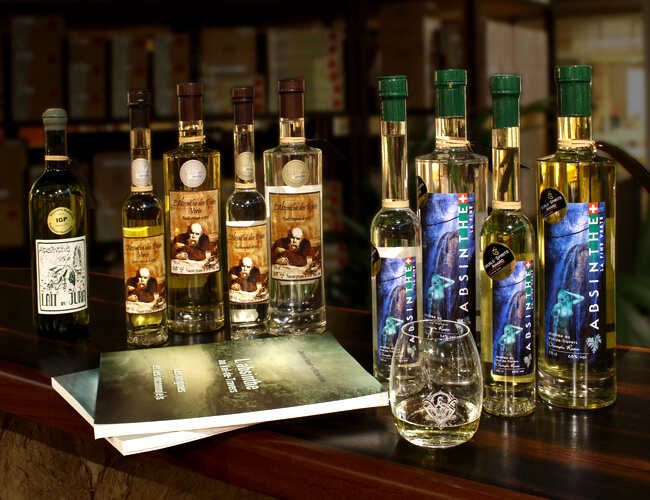Green Fairy Story ... Absinthe from Antiquity to the present day
Absinthe comes from a variety of mugwort, an aromatic plant with yellow flowers, a silvery green stem and gray and white leaves. Used as a medicinal plant with recognized therapeutic benefits (especially vermifuges) since ancient times, it has also often been associated with poison and death, especially in the Bible.
Discover the famous story of absinthe ... So many myths around what has been called the "Green Fairy"! She was supposed to drive mad in the 19th century.
Antiquity
Used all the time, especially by the Greeks and Romans, the absinthe plant is famous for its medicinal properties. 400 years before J.-C., Hippocrates and Pythagoras already extolled the virtues of absinthe alcohol, aphrodisiacs and stimulants for creativity.
1798
The first recipe for absinthe spirits is marketed by Henri-Louis Pernod, inhabitant of Couvet. It could have been transmitted to him by a binder, Henriette Henriod, who prescribed this elixir of health to its customers.
19e century
The absinthe from Couvet becomes fashionable and travels the world. It seduces intellectuals, painters, poets among whom Van Gogh, Toulouse-Lautrec, Verlaine, Rimbaud, Baudelaire... but also the popular classes. In France, Green Hour is an institution between five and seven o'clock. The French consume two liters of absinthe per capita per year.
October 7th, 1910 at midnight
The abstinent circles want to ban absinthe, claiming that the thujone it contains would make people crazy and blind. At the end of a lively campaign relayed by posters and studies always alarmist, the manufacture and marketing of absinthe are prohibited throughout the Swiss territory; the green fairy goes into hiding. In the Val-de-Travers. 60-80 distillers maintain the tradition in the illegality, many are sanctioned.
1912
Absinthe is banned in the United States.
1915
Absinthe is banned in France and its production disappears completely from the country. The distilleries of yesteryear are converted into other aniseed aperitifs without sugar.
1932
In France, Paul Ricard invents Pastis, which becomes the first aniseed alcohol to achieve a success almost identical to absinthe.
1988
A new European directive tolerates the presence of 35 mg of thujone per liter in spirits. Thus regulated, the production and consumption of absinthe are revived in several European countries, including France.
March 17th, 2004
The former advisor to the Friborg states Jean-Claude Cornu proposes to lift the ban on absinthe in Switzerland. His proposal was approved by 31 votes to none.
June 14th, 2004
After the Council of States, the National Council in turn approves the lifting of the ban on wormwood for almost a century.
March 1st, 2005 at midnight
Entry into force of the new law on alcohol and foodstuffs. The manufacture and marketing of wormwood is again allowed in Switzerland.
November 17th, 2005
Foundation of the Interprofessional Association of Absinthe chaired by Thierry Béguin, bringing together all the growers and distillers (legal) of absinthe of Val-de-Travers.
March 1st, 2006
First anniversary of the legalization of absinthe. 8 wormwood distilleries are officially listed in Val-de-Travers. They produce 99% of the national production (about 130'000 liters).
March 1st, 2007
Two years after the lifting of the ban, 10 hilly distilleries have obtained their concession, eight applications are still pending. In Switzerland, the competition is intensifying, but the hill distillers alone market three quarters of the absinthe produced in Switzerland.
ABSINTHE : Different cuvees and books available.
Login to your online account to reserve your item
Or contact us at +41 22 552 2799


